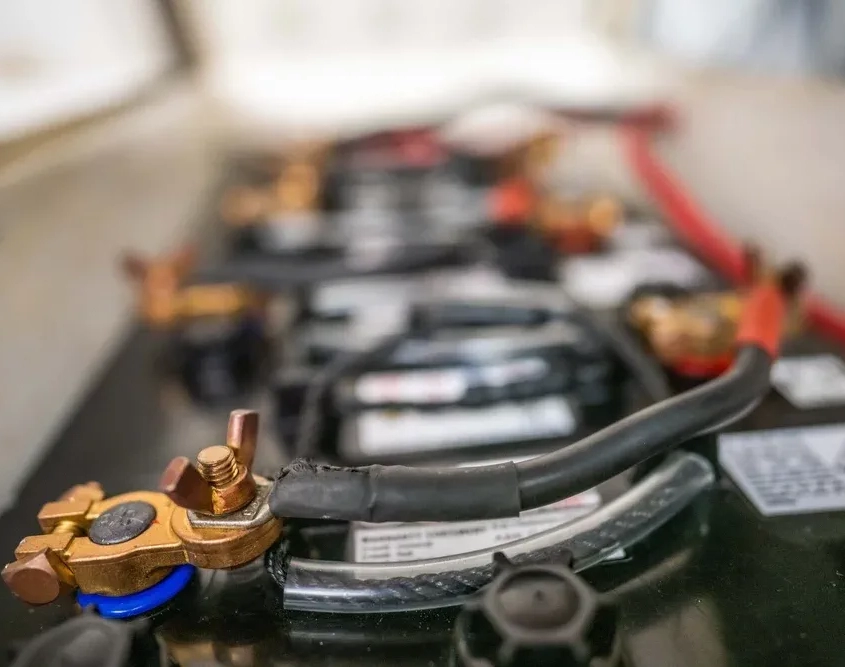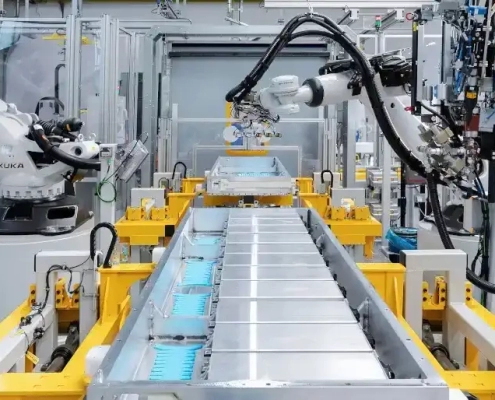2024 Guide to Choosing a Dual Purpose Marine Battery
Table of Contents
- 2024 Guide to Choosing a Dual Purpose Marine Battery
A reliable power source is crucial when you’re out on the water. A dual purpose marine battery offers the flexibility to start your engine and run your boat’s electronic systems. This type of battery is designed to provide sufficient cranking power and the capacity to power devices for extended periods. In this article, we’ll explore the various types of marine batteries, their benefits and drawbacks, and provide tips on selecting the correct battery for your boating needs.

Different Types of Marine Batteries
Marine batteries are engineered for specific purposes. Understanding their distinctions is critical to making the right choice for your boat.
Deep Cycle Marine Battery
The deep cycle marine battery is built to supply consistent power over an extended duration. It’s ideal for running electronics like fish finders, trolling motors, and lighting systems that require a stable power source. Unlike starter batteries, which provide short bursts of energy, deep cycle batteries are designed to handle deep discharges without damaging the internal structure.
These batteries are an excellent option for boaters who need reliable energy over long periods, especially for those spending hours on the water. The thicker internal plates of deep cycle batteries allow them to withstand repeated charging and discharging cycles.
Starting Marine Battery
The marine starting battery is designed to provide a quick and powerful burst of energy to start your boat’s engine. This type of battery delivers high cranking power for a short duration, which is critical for turning over your engine. Once the engine is running, the battery quickly recharges.
Unlike deep cycle batteries, starting batteries aren’t built to sustain long-term energy use. They feature thinner plates to generate the rapid energy bursts required for engine starts. This battery type is an excellent choice if your primary concern is reliable engine start-up.
Dual Purpose Marine Battery
A dual purpose marine battery bridges the gap between deep cycle and starting batteries, offering a convenient solution. It can deliver enough cranking power to start an engine, while also powering electronics for a moderate amount of time. This all-in-one battery is perfect for boaters who want to simplify their setup without sacrificing performance.
This type of battery offers a convenient solution for small to mid-sized boats with limited space, but cranking and cycling power are still needed.
Why Choose a Dual Purpose Marine Battery?
Dual purpose marine batteries provide several advantages that appeal to many boaters.
Space-Saving Design
A dual purpose marine battery eliminates the need for two separate units by combining the functions of a starter and deep cycle battery. This frees up space in your boat and simplifies your electrical system. Simplify your setup by choosing MANLY Battery’s dual purpose batteries, combining the functionality of both starting and deep cycle batteries into one compact, powerful unit.
Reduced Weight
Choosing a dual purpose marine battery means you carry one battery instead of two, which lightens your boat’s overall weight. A lighter boat can lead to better fuel efficiency and handling, making it a practical choice for many boaters who value agility and efficiency in their boating activities.
Cost Efficiency
A single dual purpose marine battery is often more cost-effective than buying both a starting and a deep cycle battery. With fewer batteries to purchase and maintain, it can help you save money in the long run, making it a smart investment for your boating needs.
Downsides of a Dual Purpose Marine Battery
Despite their versatility, dual purpose batteries do have some limitations.
Less Starting Power
While a dual purpose marine battery can handle engine starts, it doesn’t offer the same level of cranking power as a dedicated marine starting battery. If your boat has a large engine or needs a higher cranking capacity, you may want to consider a more robust starting battery.
Quicker Discharge
Since dual purpose marine batteries handle starting and cycling duties, they can deplete faster than specialized batteries. If you rely heavily on electronic devices for long periods, a deep cycle marine battery might be better to avoid quicker battery drain.
The Advantages of Deep Cycle Marine Batteries
Deep cycle marine batteries are designed to supply continuous power for extended periods, making them ideal for various marine applications. Below are some of the notable benefits:
- Longevity: Deep cycle batteries are built to endure multiple charge and discharge cycles. This durability makes them reliable for longer trips where constant power is required without quickly degrading.
- Long-Lasting Energy Supply: These batteries are designed to be deeply discharged, meaning they can power your devices for hours before recharging. This feature is handy for running accessories like trolling motors and navigation systems. Need a battery that powers your electronics for extended periods? MANLY’s deep cycle marine batteries are built to provide steady, long-lasting energy, perfect for your marine adventures.
- Quick Recharging: Deep cycle batteries are engineered to handle frequent deep discharges and recharge effectively. Their design allows them to recover efficiently from low charge levels, maintaining strong performance over time.
- Minimal Maintenance: Certain types, such as AGM or lithium-based deep cycle batteries, require little to no maintenance, making them convenient for those who want a low-hassle solution.
How to Choose the Right Marine Battery
The type of marine battery you choose largely depends on your boating activities. Here’s how to decide which is best for your needs:
- For Continuous Power Use: A deep cycle marine battery is suitable if your boating involves long periods of running devices such as lights or trolling motors. It can deliver steady power over long durations without quickly depleting.
- For Starting Power: a marine starting battery will offer the best performance if your primary requirement is quick engine starts. It delivers short bursts of power necessary to start your engine efficiently.
- For Versatility: a dual purpose marine battery is an ideal compromise if you need both starting power and deep cycling capabilities. It provides enough power for engine starts while supporting moderate electrical loads from your devices.
Considering how you use your boat will help you make the most practical choice. Understanding the specific functions of each battery type will ensure you select the one that fits your needs and enhances your boating experience.
Battery Maintenance Tips for Marine Use
Proper care of your marine battery will extend its lifespan and improve performance. Follow these essential tips to keep your battery in optimal condition:
- Regularly Charge Your Battery: Ensuring your battery remains charged after each use helps prevent damage caused by long discharge periods. This simple step can significantly increase your battery’s lifespan.
- Store in a Cool, Dry Place: When your boat isn’t in use, store your battery in a controlled environment, especially during the off-season. Disconnect the battery during storage to avoid any parasitic drain from onboard electronics.
- Clean the Terminals: Corrosion on the battery terminals can reduce efficiency. Use a wire brush to clean the terminals regularly and apply a protective coating to minimize future corrosion.
- Monitor Voltage: Monitoring voltage levels helps identify potential issues early on. A fully charged 12V battery should read between 12.7 and 12.8 volts. If the voltage is consistently lower, it might be time for a replacement.
- Avoid Overloading: Do not exceed your battery’s capacity by running too many high-energy devices at once. Overloading can quickly drain your battery and potentially shorten its life.
Charging Your Marine Battery Properly
Charging your marine battery correctly is essential to prolonging its life and ensuring reliable performance. Follow these steps to charge your battery effectively:
- Choose the Right Charger: Select a charger compatible with your battery type. For example, deep cycle marine batteries benefit from multi-bank chargers, which allow you to charge each battery independently. If you’re using lithium batteries, a charger designed for lithium-ion chemistry is the best option.
- Use Multi-Stage Charging: Modern chargers often have multiple charging stages that adapt to the battery’s needs. This helps prevent overcharging and ensures the battery reaches total capacity without unnecessary stress.
- Monitor Battery Health: Regularly check your battery’s charge levels. A healthy 12V battery should show a voltage of 12.7 to 12.8 volts when fully charged. If it falls below this range after a full charge, it might signal a need for replacement.
- Charge After Every Use: It’s essential to recharge your battery after each use to maintain its health and prevent damage from extended periods of discharge. This habit will help keep your battery in optimal condition for the next outing.
Final Thoughts
Choosing the correct marine battery and properly maintaining it is essential for ensuring your boat operates efficiently and reliably. Whether you opt for a deep cycle marine battery, a marine starting battery, or a dual purpose marine battery, understanding their specific uses and benefits will help you make an informed decision. Following proper maintenance and charging practices will further extend your battery’s life, providing a smooth and enjoyable boating experience every time.





